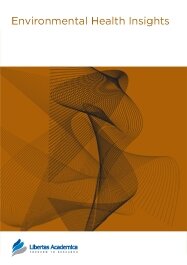

Publication Date: 10 Nov 2011
Type: Original Research
Journal: Environmental Health Insights
Citation: Environmental Health Insights 2011:5 71-85
doi: 10.4137/EHI.S7806

Foodborne illnesses caused by microbial and chemical contaminants in food are a substantial health burden worldwide. In 2007, human vibriosis (non-cholera Vibrio infections) became a notifiable disease in the United States. In addition, Vibrio species are among the 31 major known pathogens transmitted through food in the United States. Diverse surveillance systems for foodborne pathogens also track outbreaks, illnesses, hospitalization and deaths due to non-cholera vibrios. Considering the recognition of vibriosis as a notifiable disease in the United States and the availability of diverse surveillance systems, there is a need for the development of easily deployed visualization and analysis approaches that can combine diverse data sources in an interactive manner. Current efforts to address this need are still limited. Visual analytics is an iterative process conducted via visual interfaces that involves collecting information, data preprocessing, knowledge representation, interaction, and decision making. We have utilized public domain outbreak and surveillance data sources covering 1973 to 2010, as well as visual analytics software to demonstrate integrated and interactive visualizations of data on foodborne outbreaks and surveillance of Vibrio species. Through the data visualization, we were able to identify unique patterns and/or novel relationships within and across datasets regarding (i) causative agent; (ii) foodborne outbreaks and illness per state; (iii) location of infection; (iv) vehicle (food) of infection; (v) anatomical site of isolation of Vibrio species; (vi) patients and complications of vibriosis; (vii) incidence of laboratory-confirmed vibriosis and V. parahaemolyticus outbreaks. The additional use of emerging visual analytics approaches for interaction with data on vibriosis, including non-foodborne related disease, can guide disease control and prevention as well as ongoing outbreak investigations.
PDF (1.15 MB PDF FORMAT)
RIS citation (ENDNOTE, REFERENCE MANAGER, PROCITE, REFWORKS)
BibTex citation (BIBDESK, LATEX)
XML
PMC HTML


My experience in publishing with Environmental Health Insights was positive from the beginning of the initial manuscript submittal, to the published product. The peer reviewers provided helpful suggestions, while the editorial and production staff kept me fully informed of the paper's process every step of the way. I recommend Libertas Academica for anyone that is serious about publishing their research in an efficient, friendly and professional manner.
Facebook Google+ Twitter
Pinterest Tumblr YouTube